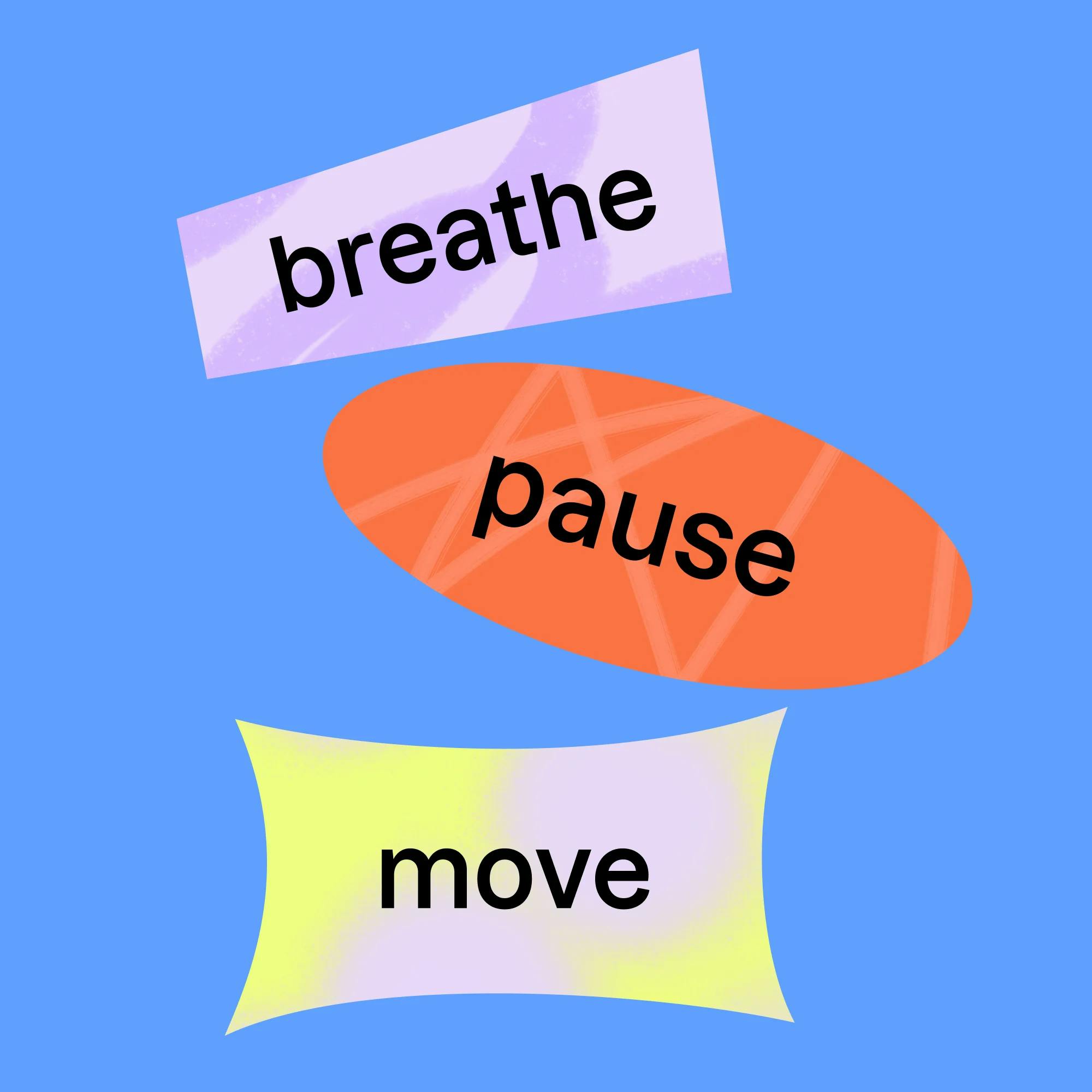
7 Strategies to Help Improve Fluency and a Stutter
 Leanne Sherred, M.S., CCC-SLP
Leanne Sherred, M.S., CCC-SLP
Stuttering, also known as stammering, can be a big communication roadblock. Difficulty getting words out and clearly expressing your thoughts can be challenging for people of all ages.
In many cases, the stutter itself isn’t the worst part of the condition--it’s the effects that stuttering can have on a person’s daily life. Both kids and adults can feel they’ve lost control of one of their most basic and important functions, which can be embarrassing and frustrating. As a result, people who stutter might avoid social situations or be less active in the classroom or workplace.
Fortunately, there are many techniques that speech therapists use to improve fluency, or the smoothness and continuity of speech. Just like learning any skill, these take practice, and the results often don’t happen overnight. However, with practice and persistence, the 7 strategies in this article can improve fluency in people who stutter and give them more control over their everyday speech.


7 helpful techniques to improve a stutter
While you can practice these stuttering techniques at home, the best way to manage a stutter is to work with a licensed speech-language pathologist. They can teach you a variety of strategies and help you find the one that works best for you. They can also empower you to speak with greater ease, advocate for yourself, and confidently navigate any situation that require speaking.
The 7 stuttering strategies explained below are divided into three categories:
Techniques to prevent a stutter from happening in the first place
Techniques that can be used in the moment of a stutter
Techniques to use after a stutter has already developed

1. Easy onsets
Easy onsets are a technique used to prevent stuttering from happening. They're used on words that begin with a vowel. You begin by using your voice very slowly and gently. Here’s how it works:
1. First, take a deep breath.
2. Slowly exhale, letting out a small, easy breath--like making an /h/ sound.
3. Begin to slowly turn on your voice, starting with a very quiet sound.
4. Slowly increase your volume to a normal speaking voice.
Here’s an example. Let’s say you're trying to say the word “apple.” Start by taking a deep breath, then let the air out slowly, and gently say, “hhhhHHHHapple.” Over time, you'll become more used to this technique and the /h/ won't sound quite as pronounced.
The early onset technique increases fluency because you are learning how to decrease tension in the vocal folds by gently voicing a word, instead of closing the vocal folds hard to initiate the word. Tension is what creates moments of stutter, so the more we can avoid tension, the smoother speech will be.


2. Light contact
You can use this technique to change how you speak in order to prevent stuttering from occurring. When speaking, we use our teeth, lips, and tongue to form various sounds. But if there's too much tension when forming sounds, stuttering can happen.
In order to reduce tension and avoid stuttering, try light contacts. Here's an example.
Let’s say you're trying to produce the /t/ sound. Think about how you form this sound: the tip of the tongue taps behind the front teeth.
Now say the /t/ sound three times in a row, with even lighter pressure each time. By the last /t/ sound, your tongue should barely touch the back of the teeth, but still just enough to make the /t/ sound.
This amount of pressure is what you should use when speaking. The reduction in tension will greatly help improve your overall speech fluency!
3. Stretched syllables
This technique is exactly what it sounds like--a stretched, or prolonged, syllable. Stretching syllables in words can help prevent stuttering from happening. When stretching a syllable, you will want to stretch it for about two seconds each time.
Here’s an example. Try the word “singer.” You would stretch the word as “sssiiingeeerrr,” allowing about two seconds for each syllable.
Stretching syllables in words can help prevent stuttering from happening.
It may seem unnatural to stretch syllables this long. And it’s true--we don’t typically speak this way. But if this prevents you from getting caught in a stutter, then it can definitely end up saving time and frustration!
Support for people who stutter
Speech therapy can build your confidence and help you speak more freely. Find the right speech therapist for the support you need.
 Get started
Get started4. Pullouts/ease outs
This technique is used during a moment of stutter. First, you'll need to identify the word you're stuttering on. After you do that, notice if there's any tension in your mouth. Try to release the tension. As you say the word, try to stretch the syllable you are stuttering and “pull out” or “ease out” of the disfluency.
Here's an example. Let’s say you're stuttering on the word “talking.”
If the word sounded like “t-t-t-t-talking,” then the moment of stutter is on the “t.”
Now identify where the tension is. In this case, it’s at the tip of the tongue, where the /t/ sound is produced. Relax and release the tension.
Then stretch the syllable out to finish the word and ease out of the stutter. It should sound like “taaaaalking.”


5. Slow speech
When we take time to slow down our speech, this automatically helps improve speech fluency. We can slow speech down in a few ways. Here are two examples:
Slow down your speech by adding small pauses between words.
Slow down your speech by elongating vowels and sounds in words.
If you are a parent or caregiver working with your child, be sure to model examples of slow speech to help them imitate you.


6. Syllable timed speech
This stuttering technique is part of the Westmead Program. Syllable timed team involves saying a sentence with equal stress on each syllable. It's similar to speaking with a metronome.
If you are saying the sentence “I went to the grocery store,” it would be pronounced “I-went-to-the-gro-cer-y-store.”
To prevent your speech from sounding monotonous, make sure that you're still placing appropriate inflection on words. This can be tricky, but if the syllable timed technique is right for you, you'll get the hang of it over time!


7. Cancellations
Cancellations are a stuttering technique that can be used after a disfluency, or stutter, has already happened.
When a disfluency occurs, pause and take a second to try to identify where the stutter happened in the word. Was it the beginning consonant, or the vowel? Pay attention to your mouth, and notice if there's tension anywhere that may have led you to stutter. Try to decrease the tension, then say the word again. Here is a simple breakdown of how to use the cancellation technique after a stutter:
1. Identify when you're stuttering.
2. Take a pause.
3. While pausing, identify the parts of speech that were involved in the stutter and what's creating tension.
4. Release the tension.
5. Repeat the word with less tension, stretching out the sound that was stuttered on.
When to seek speech therapy for stuttering
When is professional help needed for stuttering?
There’s no one-size-fits-all answer. Many young children naturally have periods of stuttering and disfluency as they learn to talk. In many cases, they’ll grow out of it.
However, for many children, stuttering can last into adulthood if it’s not properly treated. If you notice that your child is struggling with smooth speech, or their stuttering is affecting their daily life, talk with your doctor or seek an evaluation from a speech therapist. Beginning speech therapy early--before the stutter progresses--is often the best way to manage stuttering challenges.
Signs that speech therapy might be needed for a stutter
Your child’s stutter is getting worse over time
The stutter continues past the age of 5 years
Your child’s speech sounds strained
The person who stutters is actively avoiding social situations
Keep in mind that teens and adults who stutter also benefit from speech therapy. Not only can therapy teach you techniques for smoother speech, it can empower you to advocate for yourself and use your voice in all situations. As one Expressable client put it, “My speech therapist gave me the skill sets I need to thrive. More importantly, she gave me the confidence to always say what I want to say. She filled me with the belief that I am a great communicator regardless of a stutter.”
Online speech therapy for stuttering
Expressable treats people of all ages who stutter. We provide speech therapy online, so you work one-on-one with a licensed speech therapist from the comfort of your home, at a time that works for you. See our stuttering treatment guide to learn more about our approach.
Click here to get matched with a speech therapist who's experienced with stuttering and available when you are.
FAQs about techniques for managing a stutter
1. How can you get rid of a stutter? There are several techniques that can help prevent stuttering, such as easy onsets, light contact, and stretched syllables. However, a key part of speech therapy for stuttering is also learning to advocate for yourself and speak with more confidence. You can learn about Expressable's treatment approach for stuttering here.
2. Is it possible to stop a stutter as it happens? You can try a technique called a pullout during a moment of stuttering. It involves releasing any tension in your mouth and stretching the syllable you're stuttering on. A speech therapist can teach you this technique and help you decide if it works for you. 3. How do I know if my child needs speech therapy for a stutter? If your child is struggling with smooth speech, or their stuttering is affecting their daily life, contact a speech therapist for an evaluation. You can also take our easy online screener to find out if an evaluation is recommended.
4. Can stuttering go away with speech therapy? A speech therapist can show you ways to manage or control a stutter. As a result, the stutter may decrease. But even if it doesn’t, speech therapy helps people who stutter feel empowered to speak freely, in all kinds of situations. Click here to find a speech therapist who's right for your needs.
How Expressable Can Help
Concerned your child isn't reaching age-expected milestones? Looking for communication support from a professional? Expressable is a national online speech therapy practice serving children and adults. We treat all major areas of communication and feeding, offer flexible hours including evenings and weekends, and accept most major health insurance plans. We’re proud to have earned more than 3,000 5-star reviews from our clients (4.9/5 average).
Our therapy model is centered on parent and caregiver involvement. Research proves that empowering caregivers to participate in their loved one’s therapy leads to better outcomes. That’s why we combine live, 1-on-1 speech therapy with personalized education and home practice activities for faster progress.
Communication is more than words. It’s how we share how we feel and show who we are. We’re here to help you or your child do just that.









